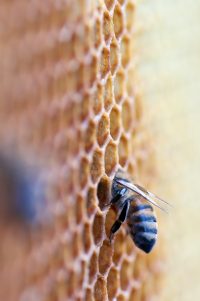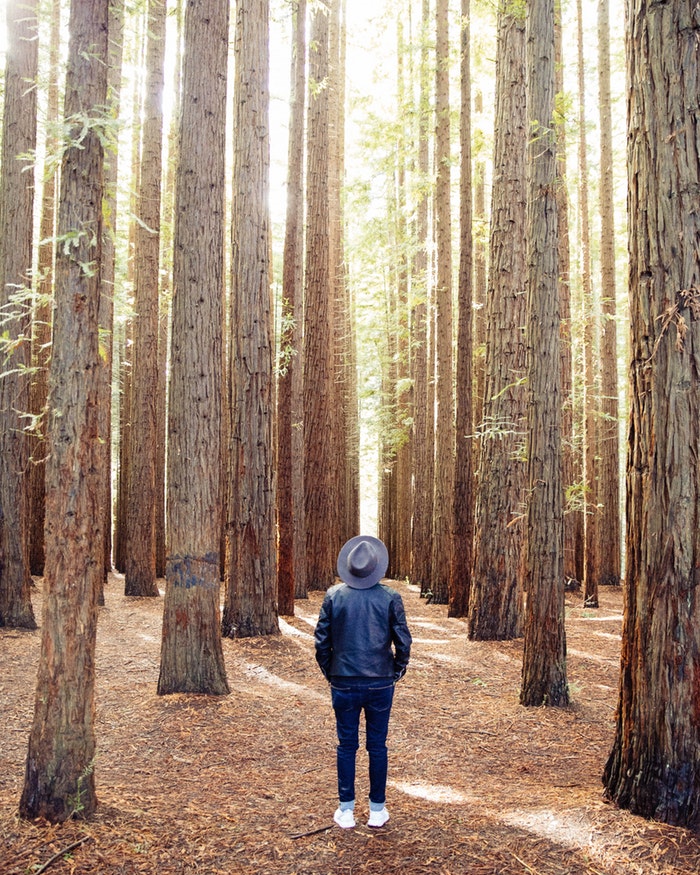Bee-ing Human
 “If the bee disappeared off the face of the Earth, man would only have four years left to live.” This startling revelation often attributed to the physicist and Nobel laureate, Albert Einstein (1), although it has been hotly debated (2), opens our eyes to how essential bees are – as, perhaps, is each and every species – in the delicate balance of interdependent life. The above statement is said to have been made in the context of ‘colony collapse disorder (CCD)’, a mysterious disease that swept across the US and European honeybee hives. (1) Realizing how important bees are to our very existence, let us dive deeper into what makes them so special.
“If the bee disappeared off the face of the Earth, man would only have four years left to live.” This startling revelation often attributed to the physicist and Nobel laureate, Albert Einstein (1), although it has been hotly debated (2), opens our eyes to how essential bees are – as, perhaps, is each and every species – in the delicate balance of interdependent life. The above statement is said to have been made in the context of ‘colony collapse disorder (CCD)’, a mysterious disease that swept across the US and European honeybee hives. (1) Realizing how important bees are to our very existence, let us dive deeper into what makes them so special.
Diversity and heritage
Broadly, there are seven families of bees (it appears that seven is a key number, which echoes in the colours of the rainbow, notes of music, days of the week, and so on) – each with many thousands of species under their banner.
The genus Apis or honeybees themselves include seven species. They are eusocial, meaning that each colony consists of one reproductive female bee and thousands of worker bees. Honey is not just sweet in taste, it has medicinal properties, too. Ancient Egyptians, Greeks and Romans had ways of harvesting honey and storing it in sealed containers, since honey is possibly the only food that doesn’t spoil. The oldest honey ever found was still edible after 5,000 years.(3)
The diversity of bees is similar to that of humans in a way – we, too, are made up of various races. Yet, while we may harp on the differences between us – of race, religion, social status, community, gender, even the football team that we support – at the end of the day, we’re all humans. Therefore, in terms of the evolution of our species, perhaps we are all heading in the same direction even if we don’t realize it. A common purpose, perhaps; something that drives us towards peeling off layer after layer of who we are not, to reveal the shining diamond of who we are, deep within our souls.
Adapting and evolving
Bees have adapted and evolved over millions of years. Researchers know this from the fossilized specimens of bees that have been preserved in the resin of trees or are now formed into semi-precious gemstones. One such bee specimen has been found fossilized in a 100-million-year-old piece of amber from Myanmar.(4)
Since most life-forms appear to have evolved over time, it shows us that no form is final, however perfect it seems; there is always room for improvement. We are all a work in progress. As humans, we’ve come a long way, but perhaps there is still a long way to go – and why not look forward to the adventure? It means that we can be a lot better than we are now!
However, not all adaptation is ideal, especially when brought about by circumstances enforced by man. If you’ve heard of the term ‘killer bee’, it refers to a species created by the transportation and intermingling of highly aggressive non-native bees from Africa, with European ones, in order to breed better honeybees. The European honeybees that had been selectively bred to be docile, soon adopted the characteristics of the African honeybees, which were far more aggressive, probably as a defense mechanism against predators. This experiment eventually backfired but the queen bees were accidentally released and spread to parts of South America and the USA. The Museum of the Earth states, “The story of “killer bees” shows the dramatic consequences of moving species around the world without considering the risks.” I think we realize that Nature is a vast, intelligent and wonderful design – beyond grasp or description. But when man tampers with Nature and tries to manipulate it to his own advantage, errors occur – and we end up living with the consequences.
Knowing their purpose
Perhaps the most common image in our minds is that of “busy bees” buzzing around, gathering nectar and making honey. But different kinds of bees have different purposes. Solitary bees (which form over 75% of the bee population) build nests which they defend, lay eggs in and raise their offspring alone. Sometimes, they die even before the offspring have emerged. This seems like such a graceful exit, having fulfilled one’s role – and makes me realize how much we hold on to what is “mine”! With a fierce possessiveness, as if the people we love are going to be ours forever. If we could live with the grace of the solitary bee, we would be able to move on without clinging to what we consider our legacy. Having played our part in the chain of life, we can leave the rest to the others to take forward – passing the baton, knowing that there are others equally capable, if not more so, to continue the work we have begun.
Conversely, there are brood parasites who leave it to others to do all the work. They lay their eggs in others’ nests, and when this parasite larva hatches, it aims to kill the host offspring and consume the pollen that was meant for them. A battle for survival ensues. What we can take from this, perhaps, is that we need challenges to grow. Circumstances that seem difficult could be just the thing we need, to leap higher than the hurdle in front of us. Those whom we perceive as “difficult people” could be exactly the opponents that make us sharpen our swords and gear up for a battle and meet the “enemy” head-on.
Perhaps that is why evil exists at all, in the world. Seth challenged Osiris, and Osiris went on to become God of the underworld…Mara challenged the Buddha – and the Buddha awakened to powers beyond imagination. The Kauravas challenged the Pandavas. Deafness and blindness challenged Helen Keller. Foreign rule challenged Mahatma Gandhi. The list is endless. Each one drew to the full height of his or her spirit and became someone whom, unchallenged, they may never have blossomed into being.
Another interesting tidbit about bees, is that they follow a distinctive division of labour. In each nest, there is a hierarchy within which each one has a role – for instance, some are egg-layers, others are foragers. Each one’s role has a dual purpose: to help them grow and to benefit the beehive. As Marcus Aurelius said: ‘What is good for the beehive is good for the bee.’ As a society of humans, when we are led by people geared to thinking of the greater good over their own personal interests, we are more likely to develop our inner potential to be good and just, inspired by them.
Among the bees, new colonies begin when a single female constructs a nest and lays eggs in it. We, too, need someone to sow the seed and begin a new colony in a similar way. Our teachers. Leaders. Pioneers who forge new paths. Protected by such leaders, nourished by their experience, we are then inspired to fly and form a nest on the next tree where other humans are waiting to hatch into their purpose. To share forward what we have received, humbly, to the best of our ability, as an example of someone who can grow, being less influenced by external expectations and more driven by an inner aspiration to know who we really are and what our purpose is, in life. Knowing that in this vast fabric of time and space, what I choose to do today, can have an impact on future generations – and is therefore, a great responsibility that I bear, to choose correctly for the beehive that sustains all of us.
Symbiotic give and take
Pollen is the primary source of protein for bees, and when they shake flowers with their feelers for the flower to release its pollen, it sticks to their bodies and they then carry this back to the nest. Sometimes, they also carry it in their ‘honey stomach’. Bees also consume floral oils and suck nectar from flowers. Their mouths have evolved different shapes, based on which flowers they prefer. (5)
However, this is not a one-way process of consumption. Bees are some of the greatest pollinators on the planet and are crucial for the survival of many crops. Fruits, vegetables, nuts, spices and coffee depend on bees to keep them thriving. Bees are even named based on the crops they pollinate, like squash bees, blueberry bees, alfalfa bees, apple bees and so on.
This principle of symbiosis in Nature is inspiring, indeed. No form of life simply takes; they all give as well. Trees take in sunlight and nourishment from the soil, and give us oxygen. Whales stir up oceans when they surface to breathe, in order to churn up marine life such that there is always enough for other species to feed on, at different depths of the ocean. The Sun gives us light and warmth endlessly, and holds the planets together in a loving embrace. As Hafiz eloquently said: ‘The Sun never says to the earth ‘you owe me.’ Look what happens with a love like that – it lights up the whole sky.’
While every other species appears to have something to offer the rest of the ecosystem, what about us? What do we offer to this wonderful world that gives us so much? Perhaps the most significant thing we can do is to transmit across time, the gems of wisdom and principles of life to live by, that we have been privileged to discover. Treasures of wisdom that give us an insight into who we are and what our purpose is, in this magnificent creation called Life.
Preserving what is of value
While we do recognize the importance of each and every species – taking bees as an example – perhaps we are not yet adept enough at recognizing the value of preserving such treasures of Nature. Some of the greatest threats to the survival of bees as a species, are pesticides, long-distance transportation of bee colonies and the erosion of their natural habitat. (6) In other words, man.
Perhaps it is easier to find a solution to reduce further endangering of bees; ‘build a wildflower garden’, advises Museum of the Earth. (7) However, it may take us a lot more wisdom to find solutions to reduce the dangers to man’s survival – not just in body, but more importantly, in spirit. To ensure that values survive selfish and separatist motives. To make religion stop dividing and start uniting people, as the etymology of the word, ‘religare’ implies was its original role. To ensure that education truly brings forth from within the wisdom that already exists in the nucleus of our being.
Finding a way home
It is also interesting to see how bees build nests in a variety of places, using various kinds of materials. There are ground nesters that dig into the soil up to 10 feet deep. Wood and pith nesters, who make their homes in branches and stems. Carpenter bees specialize in nesting in the trim of houses, barns and sheds, while architect bees construct free-standing nests from resin, mud, stones, plant fibres and animal fur. Cavity nesters like honeybees and bumblebees, build nests in cavities in the hollows of trees or readymade abandoned rodent burrows. Thanks to man-made litter, bees now make their nests with plastic and straws as well. (8)
This shows us that perhaps we can be more eco-friendly in our approach to the building materials we choose for our homes. Tall glass towers that let in daylight also need continuous air-conditioning and leave a large carbon footprint in the bargain. Yes, more homes are turning to solar power for heating, but perhaps a lot more can be done, with conscious choice rather than following style trends by default, without any consideration to their impact on the environment.
Especially since a home means a lot to us – it is seen to be a safe and secure place in which to bring up our young, no matter what our species. And yet, as human beings, at some point, some of us realize that our material homes only house our bodies. Perhaps there is another home, a less material one, to which something within us longs to return to, someday.
The behaviour of bees seems to echo this search and return. When they set out to forage for food, they need to be able to return to the right nest. To learn the way back home, they fly an “orientation flight” (8), flying backwards facing the nest and zig-zagging, tracking every arc and loop as they do so and storing it in their memory. They also learn the nearest landmarks, to be able to re-locate their nest on return.
This to me is a sign of an inkling some of us have, that there is a true home that we belong to and yearn to return to…what Plato calls ‘the reminiscence of the soul.’ – Perhaps reminding us of the home traditions refer to as God or Divinity or the Source or Life. In order to be able to return to this, we will need to learn to navigate our way back. What can help us hugely are the road maps left by various philosophers across the ages, that show us the way back to our source.
Image Credits: By Wolfgang Hasselmann / Unsplash / CC0
If any images used in this article are in violation of a copyright, please get in touch with [email protected] as soon as possible. Appropriate action will be taken.



What do you think?